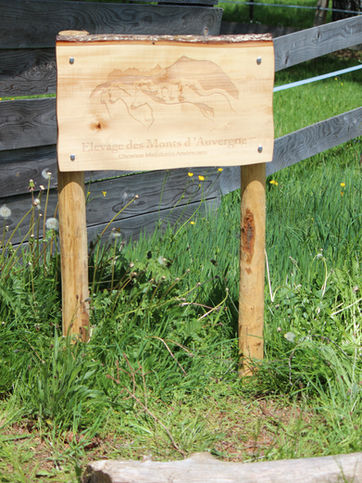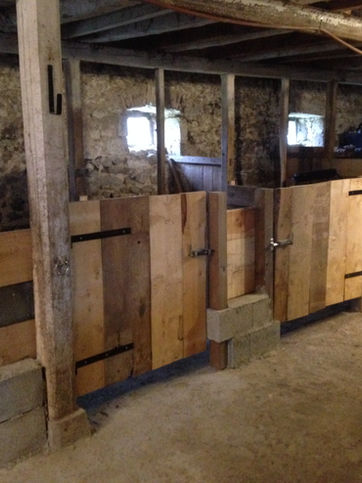In regards to
Having been alongside the equine world for "always", it was in 2007 that we fell in love
of the American Miniature Horse and decided to acquire one. Very quickly, it was the work of the mini that caught our attention and the selection of our breeders was made with this in mind.
We have chosen our horses above all for their sporting model and their balanced mentality .
They live in herds, in the meadow all year round with hay when needed and flaked cereals when necessary (pregnant mare, growing young, etc.).
Our horses are color tested when necessary (especially for the Frame Overo gene or Silver) as well as for Dwarfism . It is a genetic disease that particularly affects miniature horses. It is usually caused by inbreeding and today researchers have isolated 4 mutations in the main gene " Dwarfism ACAN D1, D2, D3 & D4 ". While the AMHA breeding herd is mostly free of affected individuals, a large number of healthy carrier miniature horses remain. Which, crossed together, have a 25% chance of producing a horse with dwarfism.
Testing is therefore a guarantee of serious transparency, and allows illuminated crossings.
We do not hide anything from qualities and faults of our horses. The teeth of those for sale are systematically photographed in order to give you a precise idea of the state of the teeth. Although our breeders don't have to worry about teething, we are never safe from an "accident".
The reproduction is done in freedom or in hand when necessary, the configuration of our breeding allows us to always have an eye on our herds and thus to assiduously note the dates of heat and jumps. Our mares foal under surveillance. We start to bring them in about 1 month before the presumed foaling date in order to monitor the evolution of the udder and other factors (shape of the belly, behavior in the box ...). An infrared camera and a "Breeder alert" system allow us to limit as much as possible the risk of absence during foaling.
As a general rule, our mares make 2 foals in a row before taking a year off during which they are put back to work . We believe that a brood mare in good health, followed annually by an osteopath and building regularly (back, abdomen, rump ...) is a future mother who will have an easier time foaling because her body will have been carefully prepared for it. In addition, this gradual return to work also allows us to consolidate our relations with them and thus have serene and confident mares at birth and during lactation.
Other treatments are similar to those provided for horses of all other breeds.
In addition, minis are not fragile animals, they do not contract more disease than large horses and are very hardy.
All of our horses or foals are present on our site in order to maintain a
perfect transparency vis-à-vis our breeding. Our photographs are not retouched, and our horses are not conditioned (under-nutrition, installation of neck wrap or bodysweat ...). They are worked on foot in a traditional way, with respect and understanding of the animal.
Our facilities
We currently have 2 ha 7 divided into several plots. Our AMHAs enjoy 5 paddocks of around 2500 m² + one of 5000 m² which allow us to make a rotation to have weed a little more than 6 months a year. In addition, we have set up a small foaling paddock in front of the house to take out the mares and their newborn foals the first days. Our horses live in the meadow all year round and returned to the stalls in the event of strong storms or several weeks before and after birth for the broodmares. Being located at an altitude of 930 m , we take advantage of abundant snow in which horses love to play. They only returned if the cumulative snowfall in winter exceeds 40 cm.
A stable of nearly 200 m² is glued to the house, which allows us to have about ten mini boxes including two foaling boxes (approx. 8 m²) equipped with cameras and 8 boxes of 6 m², in the long term we would also like to have two boxes for our grown-ups.
Our paddocks are fenced in wood / electric tape or sheep netting / electric tape to avoid running away as much as possible and thus ensure the safety and comfort of our horses.
We benefit from a 15 x 25 m quarry which allows us to work our horses and those in boarding or breaking through throughout the year.

















